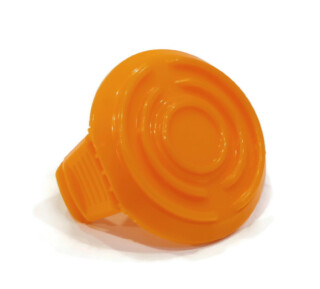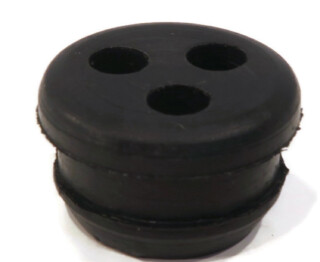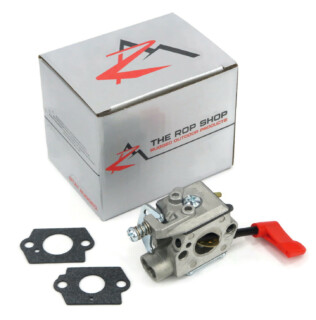
5 Tips for Using a String Trimmer Like a Pro
Don't be a second-string trimmer.
So there are some spots in your yard that are getting alarmingly tall, but you can’t deal with them by grabbing some shears or hopping on the mower (perhaps because your mower is experiencing issues). Fortunately, there’s another option: the string trimmer.
If you’re new to this kind of equipment or just need a refresher, read on for five tips on how to use your string trimmer like you’ve been doing it for years.
1. TAKE PROPER SAFETY PRECAUTIONS
We know—personal protective equipment (or PPE) is usually cumbersome and prone to collecting sweat. That said, you should always wear it whenever you pull out your string trimmer.
But what all should you be wearing? Get started with the following:
- Eye protection—you’ll be grateful for it sooner or later. The debris from your string trimmer can reach incredibly high speeds1, and you don’t want those missiles anywhere near your eyes. One report estimated that there were 81,907 lawn trimmer-related injuries from 2000-2009, 42.5% of which involved injuries to the eye.2
- Tight clothing—anything that’s too baggy can get snagged on your trimmer. Plus, opt for long and heavy-duty pants instead of shorts.
- Sturdy footwear—even steel-toed boots if you have them. Yes, this means you can’t wear flip-flops while you whack weeds.
- Ear protection—trimmers are loud. Fortunately, we’ve got you covered with 3M hearing protection and Earmuff brand hearing protection with Bluetooth compatibility so you can jam while you trim.
Using a string trimmer is naturally going to result in debris flying around, so use good judgment and act accordingly.
(Plus, when you're ready to use your mower again, keep the safety theme going by checking out our lawnmower safety tips.)
2. USE THE RIGHT KIND OF WEED TRIMMER
String trimmers are made with two main shaft types: straight and curved. Each has its pros and cons, so do some investigation before purchasing.
Generally, straight shafts tend to be associated with more powerful trimmers, and they’re better at getting into those tight spots around your yard. However, curved shafts, being less unwieldy, are a bit easier to manage. You can learn a bit more about shaft types here.





3. KEEP IN MIND THE SPIN DIRECTION
The direction in which your string rotates makes a significant difference in how you use it.
For example, let’s say your trimmer string spins counterclockwise. This means that as you’re going along, happily cutting weeds, debris is getting thrown to the left.
When you’re trimming up against a surface like a curb or a fence, there’s potential to clog up your trimmer with said debris unless you’ve accounted for that spin direction. If you’re trimming with your trimmer’s left side against that surface, those weed fragments have nowhere to go.
Instead, keep the right side of your trimmer closer to the spot you’re clearing to avoid clogs, and when you’re doing those sweeping motions, always go from left to right. (Unless, of course, your trimmer spins clockwise. Then you’ll have to reverse the above advice.)
4. KNOW YOUR STRING TRIMMER TECHNIQUES
There are a few main techniques to use when you’re operating a weed whacker, each with a different purpose.
- Edging—this is for, you guessed it, edges. Use this technique on the perimeters of your grass to give it a sharp, clean feel. You’ll have to maneuver your trimmer so that your string is perpendicular to the ground. Take your time as you trim, watch for the inevitable flying debris, and know that a perfectly sculpted lawn edge is something you’ll have to work up to over time.4, 5
- Tapering—this technique can add a subtle height gradient to your lawn. As you might have guessed, to utilize this method, you’ll have to hold your trimmer at an angle as you’re working.
- Scything—it may sound like the Grim Reaper’s method of choice, but this technique can be really helpful if you’re dealing with long grass. Swipe in and out shallowly in a U shape until you achieve the desired result. This method is best attempted with a high-powered trimmer.5
- Screeding—when a driveway or sidewalk has been in place for a while, grass and weeds can grow in cracks. Many homeowners might use a grass or weed killer on these areas, but they’ll still have to reckon with the shriveled dead weeds afterwards. Screeding can be a better alternative. To use this technique, maneuver your trimmer until the string is barely touching the hard surface and is by the weed’s base; then, just pop the weed up. This can be rough on your trimming line, so keep that in mind if you’re wanting to utilize this method.5






5. BE GOOD TO YOUR STRING
Unsurprisingly, the string is a key part of your string trimmer, so take care of it.
First and foremost, using the trimmer as it’s intended will help to extend your string’s life. For example, if your weed trimmer isn’t built to be used like an edger, then don’t use it to edge your lawn, and never take your line into thick brush and twigs, which can make it bind up or fracture.
You can also help maintain your string with these tips from Your Green Pal:
- Keep your trimmer head parallel to the ground when you’re tapping the spool for more string, and only tap for more string when you really need it.
- Purchase an aftermarket spool with more thread on it so that you don’t have to replace your string as often.
- Keep in mind the size of your string and whether it’s up to the job you’re doing. If you’re looking at using a string bigger than .095 inches, it might be that you’re better off using a metal blade.
- Consider your string’s shape—it comes in varieties like twisted, round, diamond, and multi-sided.
- Never leave your string in direct sunlight.
- Soak your string in water in the summer to prevent the heat from damaging it.
Do you go through string like there's no tomorrow? The ROP Shop carries a selection of string trimmer line.
TRIM AWAY
Now that you know these string trimmer tips, you’re probably itching to put them into practice, so get out there and start trimming! Don't forget to keep your weed trimmer running in top shape to get the safest and best cut. Check out our inventory of related parts and accessories.
Plus, when it's time to put the trimmer away for the season, you shouldn't just toss it into the shed. Follow our guide to winterizing lawn equipment (and other outdoor power equipment) to help prolong the life of your string trimmer.
[REVISED 3/2023]
- https://dengarden.com/landscaping/How-to-Use-a-String-Trimmer-Properly
- https://pubmed.ncbi.nlm.nih.gov/22710000/
- https://homeguides.sfgate.com/difference-between-straight-shaft-curved-shaft-trimmer-91827.html
- https://thrivingyard.com/edge-with-string-trimmer/
- https://www.sgs-engineering.com/help-advice/use-strimmer-ultimate-guide/
- https://www.yourgreenpal.com/blog/how-to-make-the-string-in-your-weed-eater-last-longer

Having trouble using your ROP Shop pressure washer surface cleaner? These tips can help you out.

Thinking about getting a pressure washer? Here are eight advantages to owning a pressure washer to help convince you.

Installing a new pressure washer pump doesn’t have to be a hassle. Let The ROP Shop walk you through it.

Ready to learn how to pressure wash quickly, effectively, and safely? Check out these eleven tips.